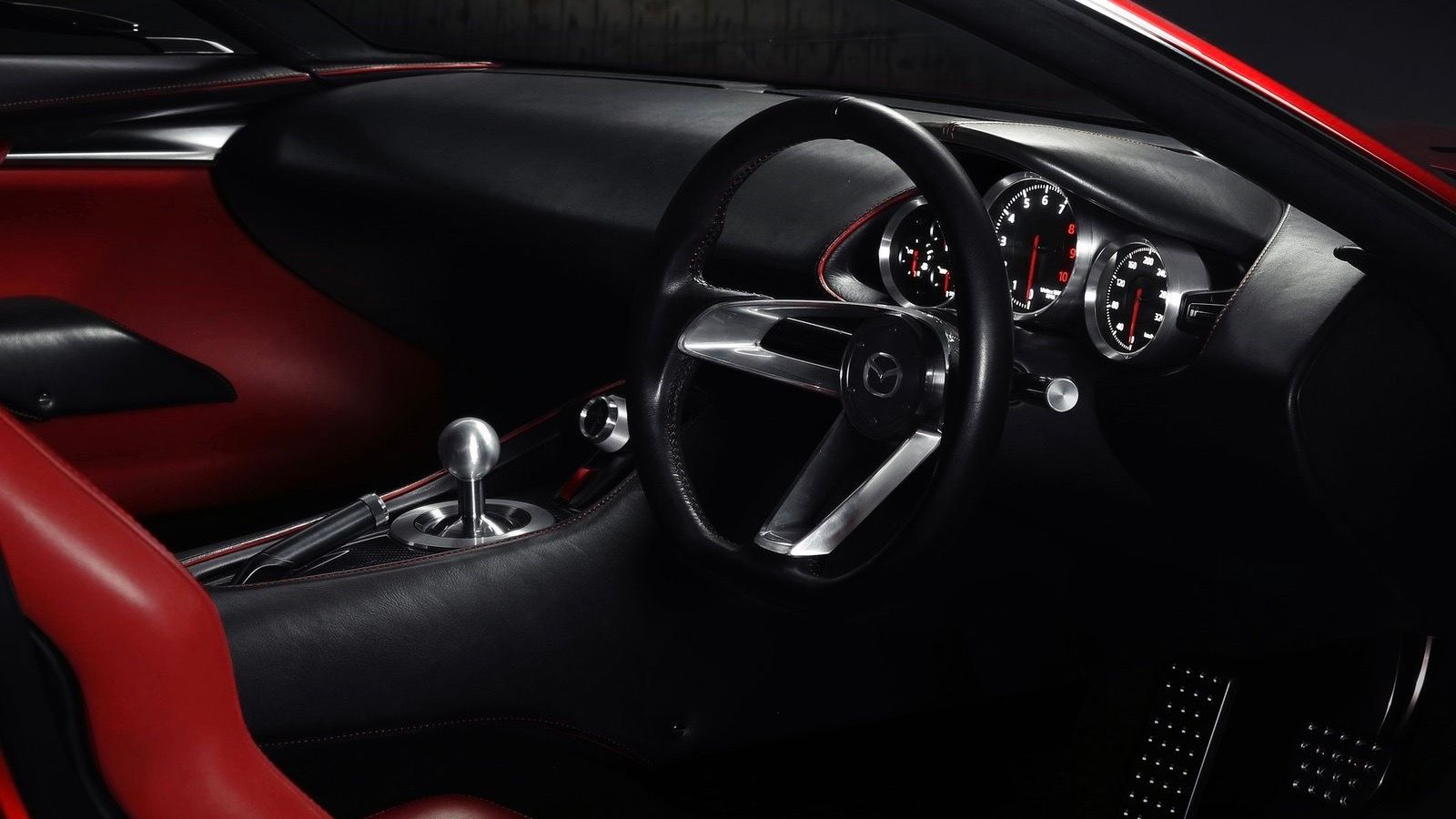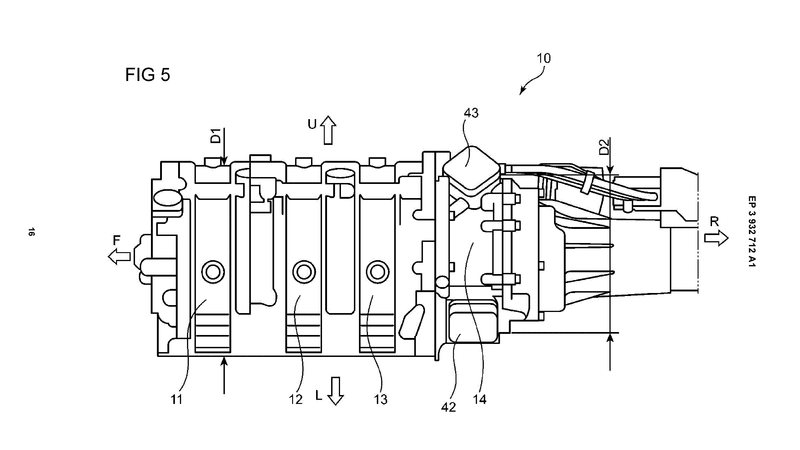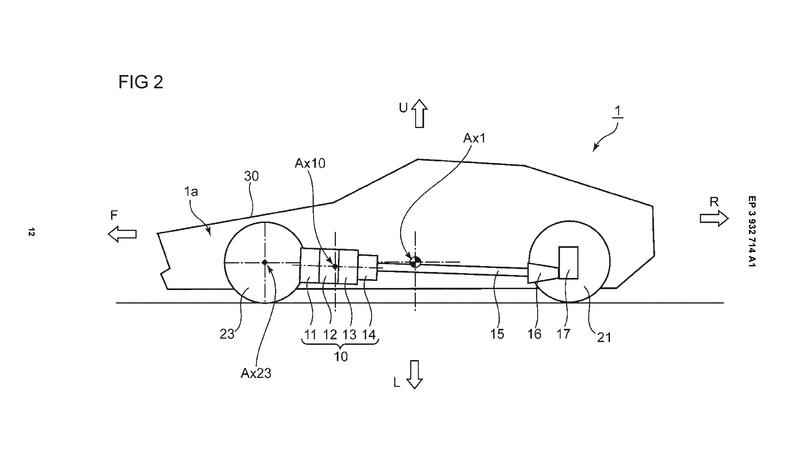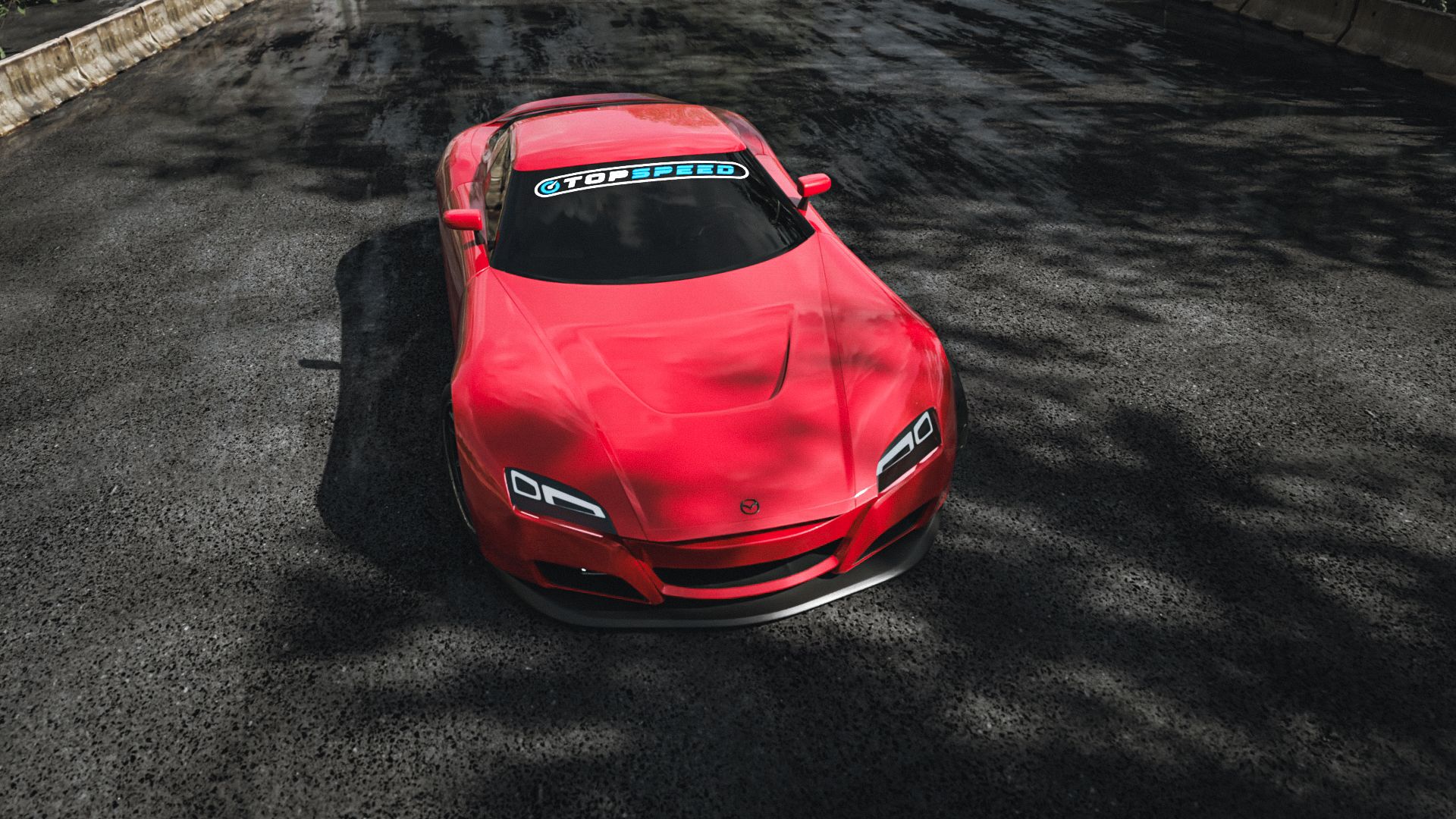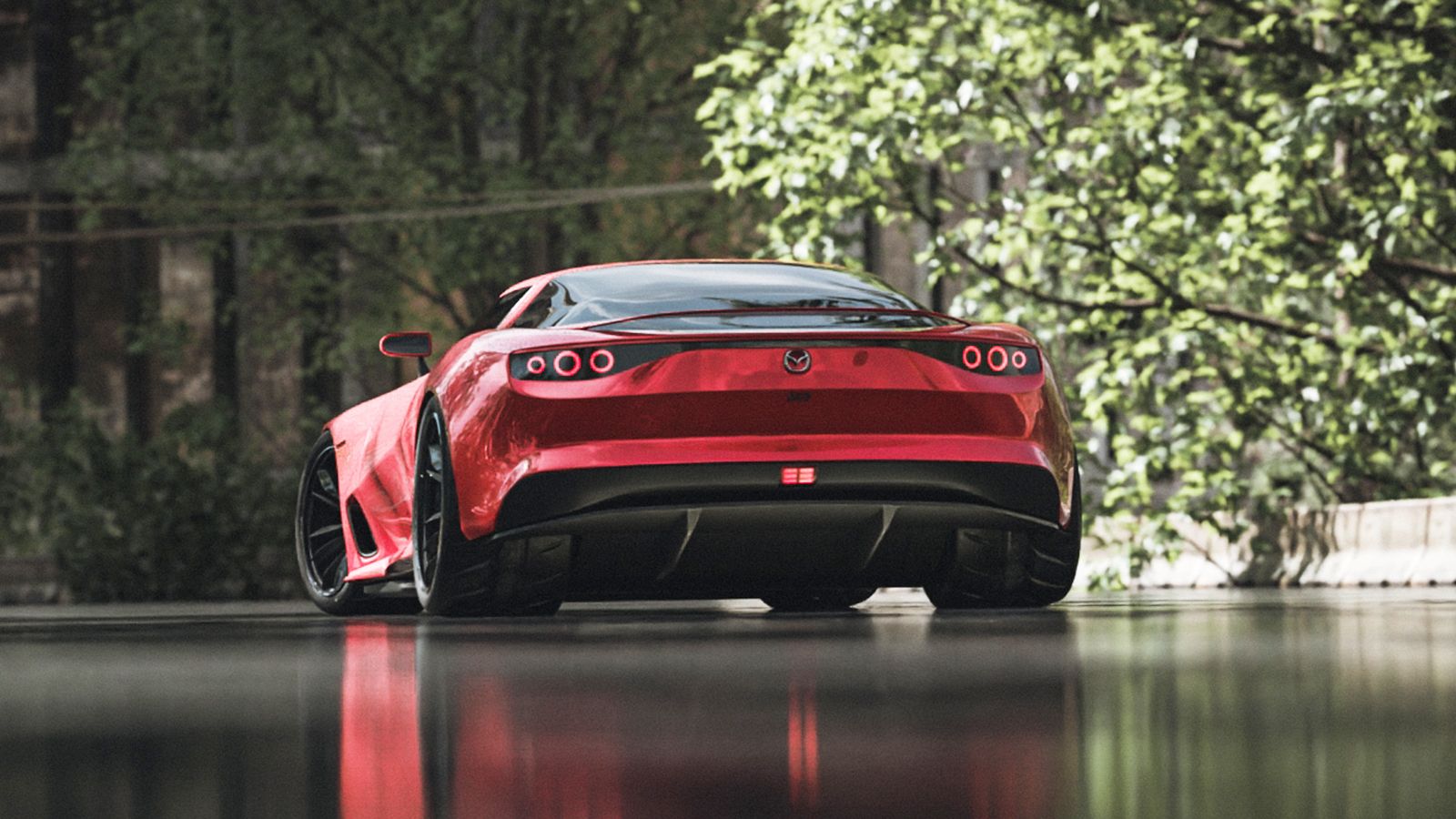Mazda has made great cars over the years, but its current lineup lacks any vehicle that will stir emotions and satisfy the appetites of car enthusiasts. Sure, there's the Mazda MX-5 Miata, and granted, its SUVs and crossovers are on the fun and sporty side of mainstream, but apart from the Miata, Mazda has no vehicle to compete with the likes of the Toyota GR Supra, Nissan Z, or in other high-performance car classes like the Honda Civic Type R. Mazda most likely have the resources to build one on a profitable scale, but rumors of a rotary-powered sports car that will spiritually succeed the Mazda RX-7 have been circulating for the past few years and with patent filings to match. Assuming the so-called "RX-9" project pushes through, what will the sports car look like?
Kodo Design In Its Finest Form
Mazda's Kodo Design has been one of the most iconic and well-received in the automotive industry. So much so that there are many customers whose motivation in buying a Mazda is because of the way it looks. Thankfully, we have exclusive renderings to satisfy your imagination and thus help you to read between Mazda's seductive lines that were previewed by the RX-Vision Concept back in 2015.
The Kodo Design has been expressed through its lack of any curves that are combined with the classic long hood and short rear deck proportions--a common recipe that most of the world's most beautiful cars possess. Basically, Kodo Design sprinkles certain sports car design philosophies into a vehicle that would otherwise be too rational or bland to look at. The RX-9, on the other hand, is already a sports car or a grand tourer from the get-go, which means this car would serve as a distillation of Kodo Design philosophies. It's Mazda having the design freedom to do what it always wanted to do and not constrained by metrics such as offering plenty of headroom, a huge trunk, a high ground clearance, or any of those rational metrics.
That is what the TopSpeed team managed to achieve with this digital rendering. The future RX-9 sportscar comes with a long hood, short rear deck along with short overhangs. The eyes squint at the road like a lion ready to eat its prey, while the rest of the bodywork is traditional Mazda--no body lines to add visual noise on the clean sheet metal. Large alloy wheels that feel the wheel wells are also a key ingredient of Kodo Design, and here in the RX-9 renderings, that's also been fulfilled well.
Now as for the interior, the future Mazda RX-9 will most likely draw inspiration from the RX-Vision Concept that previewed it. As with Mazda of today, expect the interior to be luxuriously trimmed and premium in feel, punching above other brands like Toyota and nearing the perceived quality levels of a Lexus. If the concept car is also any indicator, then there might be no infotainment screen for the RX-9, since the concept had an interior that's purposefully analog yet modern and sleek. But, then again, even sportscar customers nowadays want some of the digital features of new cars nowadays.
But, What Will Lurk Underneath The RX-9's Long Hood?
It is common knowledge at this point that the RX-9 would have a rotary engine underneath its long hood. After all, the "RX" in the series naming scheme stood for "Rotary eXperimental". One of the challenges of the rotary engine is fuel efficiency and emissions, and in the MX-30 R-EV rotary range extender electric vehicle (EV), Mazda implemented a unique take on variable valve timing that no one has ever done in a bid to improve the engine's environmental performance. A similar strategy could also be implemented in the RX-9, but more recent patent filings show that Mazda has something different in mind for the rotary sportscar.
Mazda is planning a three-rotor layout for the rotary engine, thus making this one of the most unique cars to ever come out of Hiroshima. Whereas the RX-7 had a two-rotor engine, it was only in the Cosmo that Mazda implemented a three-rotor design. At its peak, it produces "276" horsepower, but I'm putting that in quotes because of the "gentleman's agreement" among Japanese automakers from the 1980s to the 1990s. In reality, it most likely produced more than that since the gentleman's agreement wasn't even a regulation, but an informal agreement among Japanese automakers to limit production cars (or at least label them) to 280 horsepower due to increasing safety concerns amid the rise of the "bosozoku", which are street gangs who would violate traffic safety laws in Japan.
Electrification Will Hopefully Cure The Rotary's Woes
Anyway, going back to 2023, the Mazda RX-9 may benefit from electrification instead to improve the engine's environmental performance. The 48-volt mild-hybrid system will most likely operate in the same way as the one in the CX-90. Once again as Mazda's usual tradition of doing things unconventionally, the e-Skyactiv-G 48-volt system in the CX-90 actually doesn't just contain a belt-driven starter generator. Featuring the new eight-speed automatic with a multi-plate clutch instead of a traditional torque converter, it uses those clutch plates to determine when it will use just the electric motor (when slowing down, coming to a stop, or accelerating from a stop) or both.
Apart from the tri-rotor engine, which may produce around 350-400 horsepower, there's another patent that showcases a potentially more powerful three-motor plug-in hybrid drivetrain. It still uses a rotary engine, thankfully, but there are two electric motors at the front and the third one is located between the transmission and the engine.
But It Still Needs To Be As Light As Possible
All of these electrification technologies will most likely introduce a weight penalty for the RX-9. The third-generation RX-7 weighed somewhere between 2,685–2,954 lbs, which is light, especially by today's standards of stringent safety regulations necessitating the use of sophisticated safety features. Despite all the modernity provided by the safety features and the electrification technologies, we certainly hope that the RX-9 won't be a porky sports car to drive.
When Can We Expect The RX-9?
Unfortunately, the Mazda RX-9 is shrouded in secrecy when it comes to its development stage or whether it will even come to fruition. The good news is, as long as the rumor mill is alive, then there's hope that we'll once again see a rotary-engined sports car within our lifetime and before the world has gone silently into the electric era.
As for pricing, once again this is also shrouded in mystery, but if the RX-9 does come alive, we don't expect this car to be prohibitively expensive--at least by sports car standards. We predict that it will be priced somewhere between $60,000 - $80,000, considering the complexity of the drivetrain and the massive investment needed to be recuperated from such a low-volume car. When the oil crisis hit in the 1970s, Mazda was dedicated to having a lineup of models solely powered by the rotary engine, but this nearly made the company bankrupt. This led to the brand doing a three-pronged approach of offering piston engines in mainstream cars and the rotary engine in sports cars.

